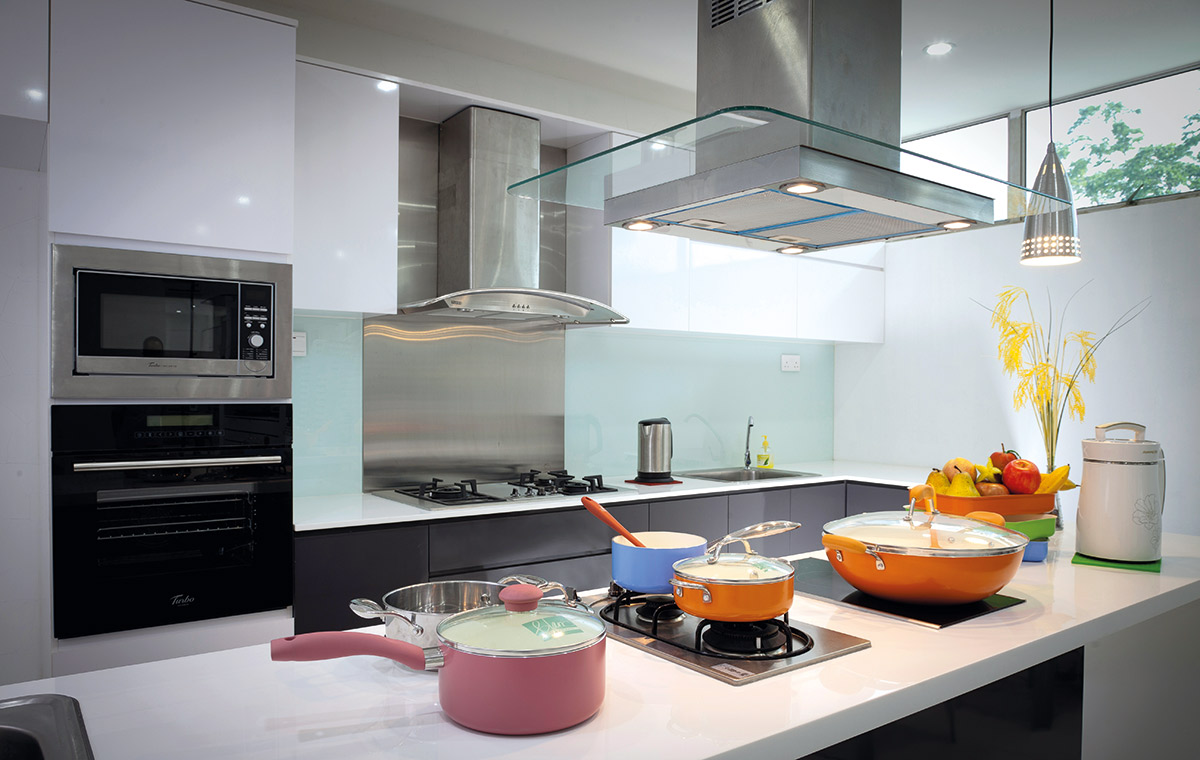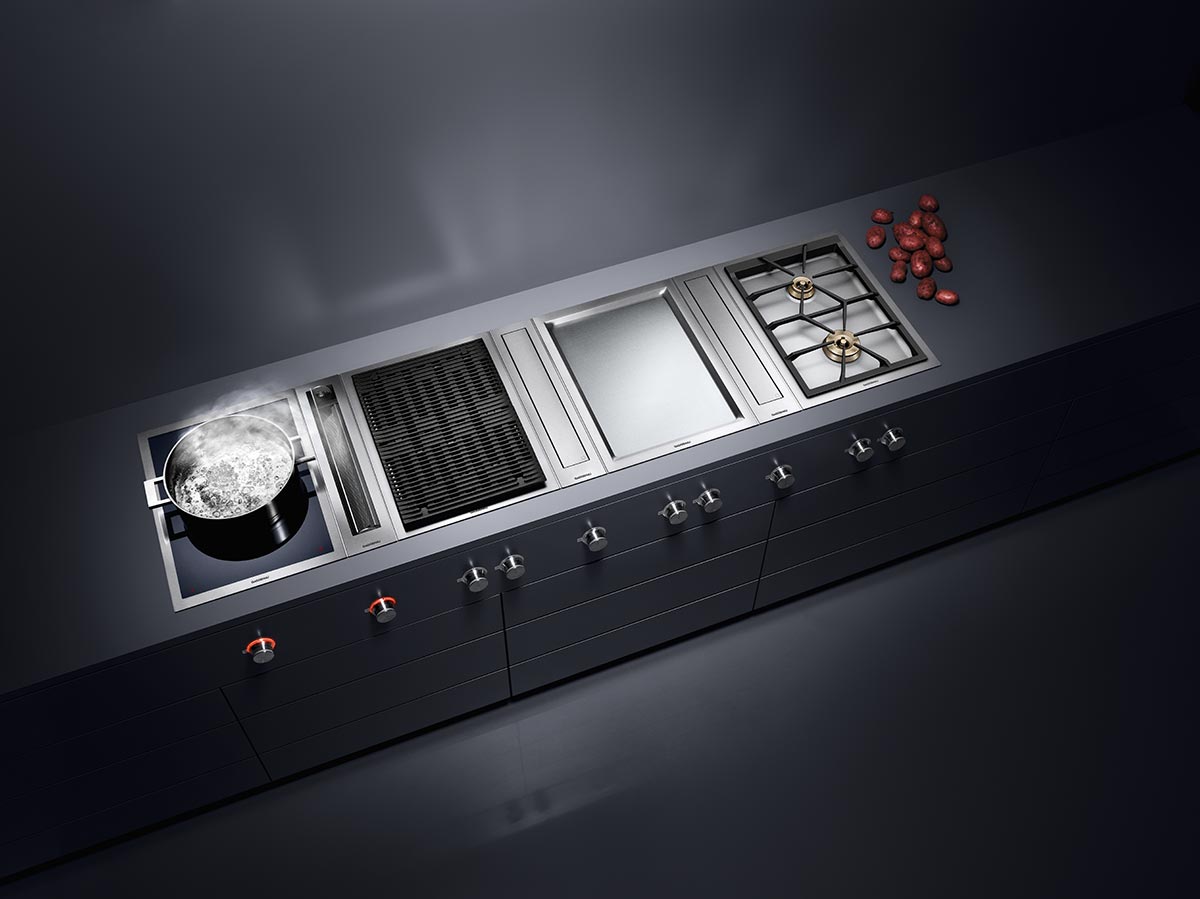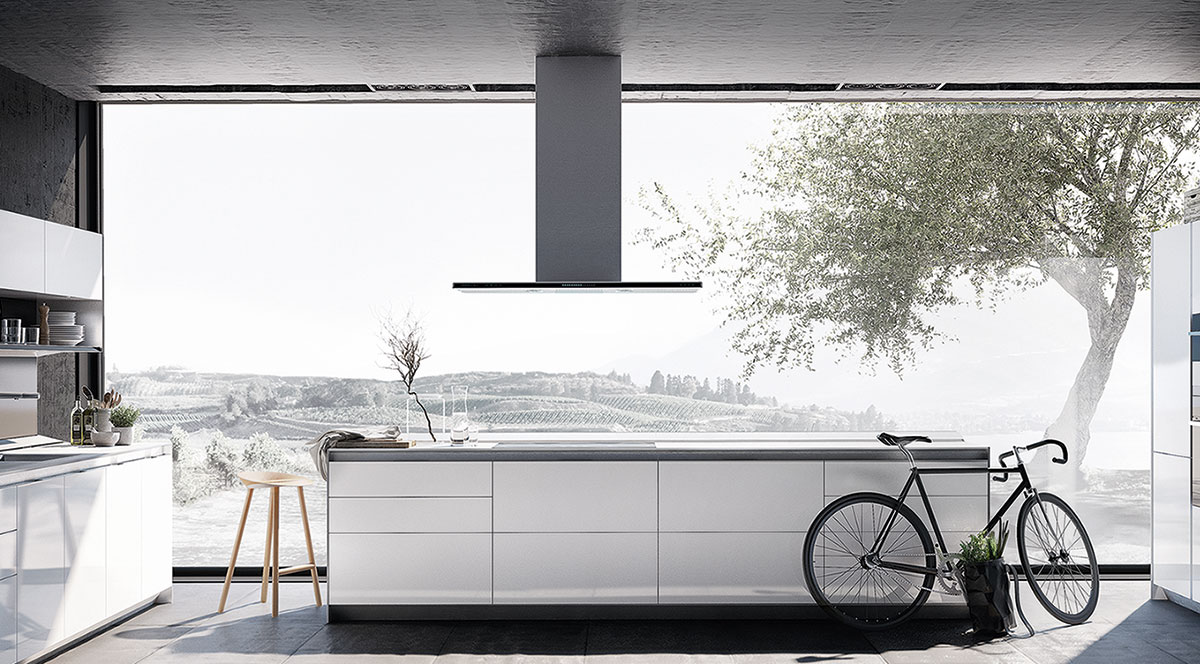As a utilitarian zone, the kitchen has to be well-equipped to meet your cooking needs. Other than the cooker hob, the other essential appliance in this space is the ventilation hood. This is an essential piece of equipment for removing unwanted fumes, odours and grease for a clean and healthy kitchen.
In the second part of our two-part series about cooker hobs and hoods, we examine the most important things to note when choosing the right ventilation hood for your kitchen.
How do I determine if a hood is the right one for my kitchen?
Just like wine and cheese, a good hob is best paired with an efficient hood for the ideal cooking set-up. Finding the best hood for your kitchen is no rocket science either, as size is the primary determinant of its suitability. The ideal hood is one that is larger than its accompanying hob, such that it provides maximum ventilation by covering the entire cooking area.

A good ventilation hood should be large enough for its accompanying cooker hob to effectively remove unwanted odours and grease. Image credit: Turbo
With regards to a kitchen’s aesthetic and practicality, the design of a hood matters as an overly large model can result in a cramped space as well as energy inefficiency. Island and chimney-type hoods are more suitable for large kitchens that see heavy usage, whereas slim-line or retractable models are a better (read: space- and energy-efficient) buy for smaller cooking spaces.
What are the different types of hoods available?
The most common type of cooker hoods out there are the chimney hoods and under-cabinet hoods (which are also known as powerpack hoods). These types of hoods are positioned directly above the cooker hob to easily suck up unwanted smells and smoke. However, when deciding between a chimney hood or a bench hood, consider the spatial layout of your kitchen. In general, powerpack hoods are ideal for small cooking zones as they can be built into your cabinetry, allowing you to use remaining space for storage. On the other hand, chimney hoods can be great design statements in an industrial-style kitchen.
Other than these two types of ventilation hoods, there are also the downdraft hood. This is a retractable hood that is kept inside the cooking station until it is ready to be used, resulting in a neat and seamless-looking kitchen. A great option for small cooking zones as well as open kitchens, a downdraft hood can be designed into the stove, kitchen island or into the wall.

Great for small kitchens, a downdraft hood can be retracted into the cooking station for a neat and seamless look. Image credit: Gaggenau
What’s the difference between ducting and re-circulating range hoods?
Also known as extracting hoods, ducting removes smoke and fumes from the kitchen to the outside via a piping outlet. These are for homeowners who are looking for effective removal of kitchen grease and odours, especially those with an open-concept kitchen. But the ducted pipes can take up considerable space in your cabinets and may be more pricey because of complicated installations.

Ducted range hoods are ideal for open-concept kitchens as they remove unwanted fumes and smell out via a piping outlet. Image credit: SieMatic
Re-circulating hoods require smoke and fumes to pass through a carbon filter before the clean air re-enters the kitchen environment. While it takes less space than ducting hood, the filter removes grease and odours only – large amount of steam and hot air from heavy cooking may still cause condensation to occur on glass surfaces.
This was adapted from an article originally published in the May 2017 issue of SquareRooms.



